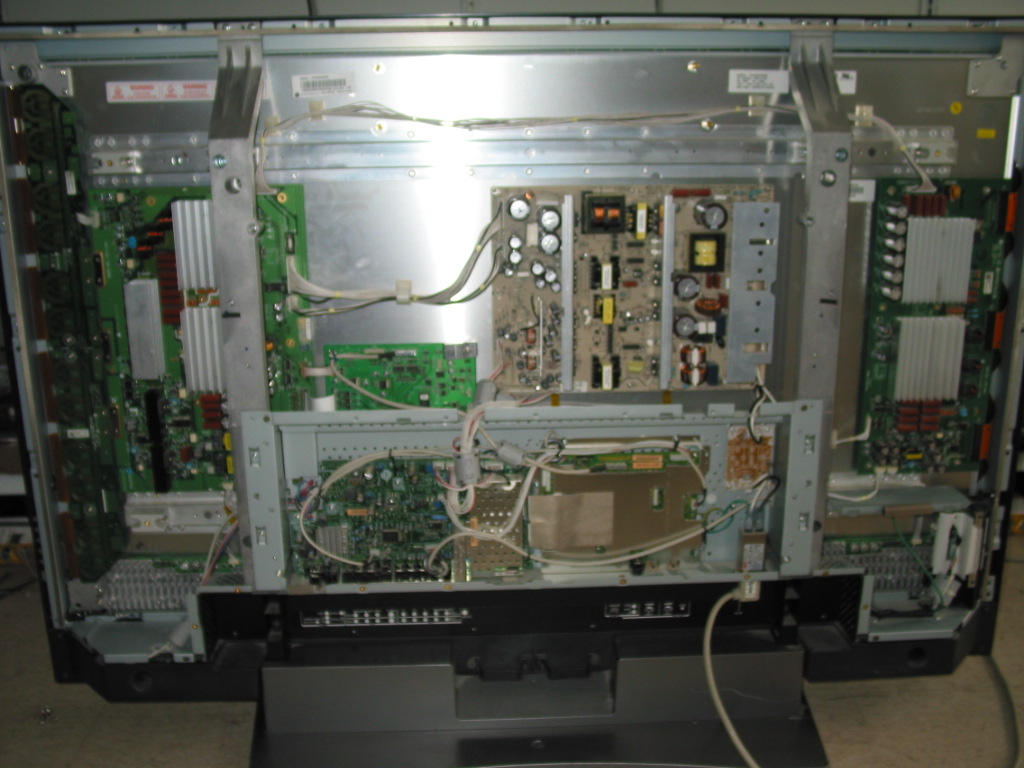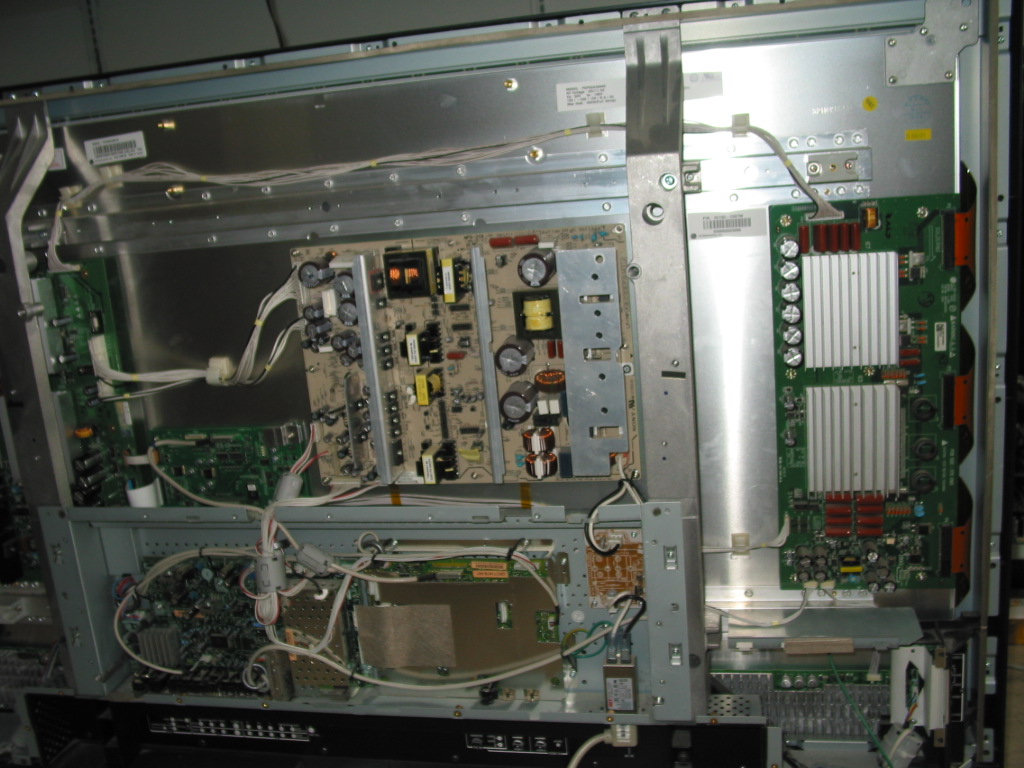Question:
A friend of mine recommended you. i just bought a toshiba 50hp66 50" plasma. loud pop, screen went black. after sitting off for an hour turned it back on. everything works but is very light colored and dim. pictures seems to be clear, no lines,spots etc... not sure which board would cause a dim screen. thanks in advance. Travis
Answer:
This is a known issue with Toshiba 50HP66 and a bunch of other TVs using the same display and supporting boards.
(in a plasma TV almost everything is about the display being used; same display in two different models means that bunch of other boards are also the same, namely the sustain boards, the buffer board(s) and the plasma display controller; the main board is different for different OEMs and that's about it. Oh well, the power board may also differ, but the differences would be very minimal, e.g. an extra 15V power needed by the main board).
Anyway, what goes bad with a pop is one of the sustain boards. Sometimes both, but most commonly just one of them at a time.
Here is how the TV looks at the back when you open it (click to get larger picture):
What usually goes bad is either the larger board with three heat sinks to the left of the TV (called YSUS board , or, sometimes Y-Main) or the one with two heat sinks at the right side of the TV (called ZSUS or sometimes X sustain).
Sometimes, but relatively rarely, it is the large board in the middle of the picture (and the TV) that goes bad - that's the power board; if the TV is completely dead and has no front LED indication, no response to power button then the first thing to check is the power board.
Anyway, in your case it is mostly sure that it is either the YSUS or the ZSUS board that is bad.
And since you say you do have a faint, dark image on the display then it is most likely that it is the ZSUS board that has failed.
Here's a closer look at it:
Now, customers often ask how to make sure the board is bad before sending it.
They read around Internet and search for swollen capacitors , burn marks and other signs of a failure.
Well in case of those boards the truth is you don't normally see signs of a failure.
What fails is under the heat sink and above the board. There's simply no way for you to see it there, but for your eyes only I've blogged about the subject before so you can actually see what has happened there if you're curious:
http://blog.coppelltvrepair.com/2010/02/y-sustain-6870qyc004b-6871qyh039a.html
Sometimes the failure results in a short and that can be measured , but often times (as in your case) it results in an open circuit and that just can't be measured without applying power.
Which means the easiest way to test the board is to put it in a working TV to see if it will still be working.
And that's exactly what we do when we receive one of those for service.
If interested in using our service or servicing it yourself...here's a link for you:
Toshiba 50HP66 repairs and modules from Coppell TV Repair

